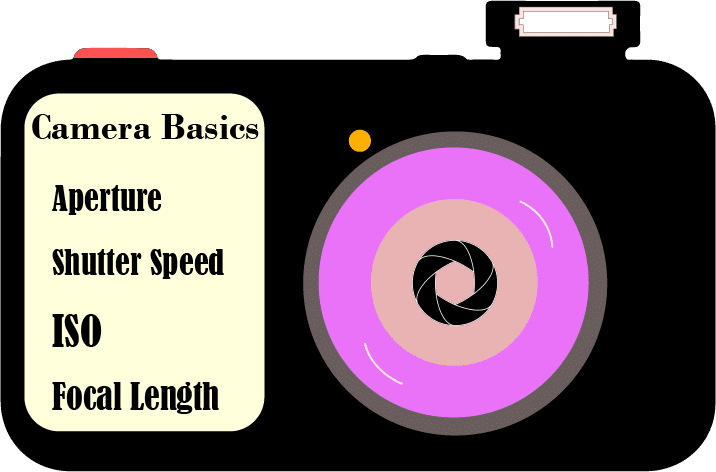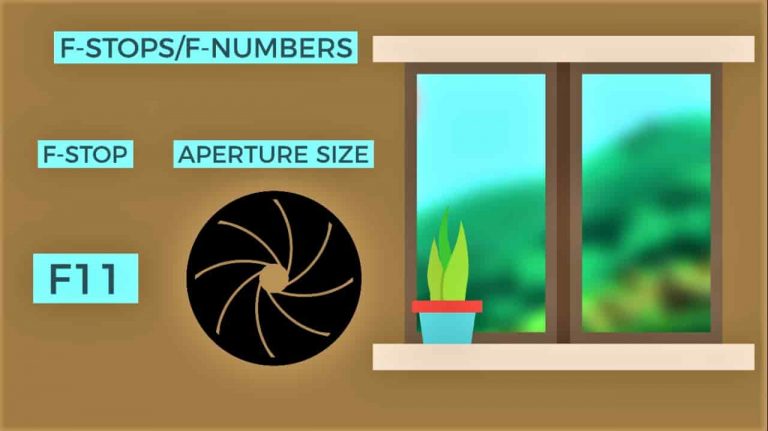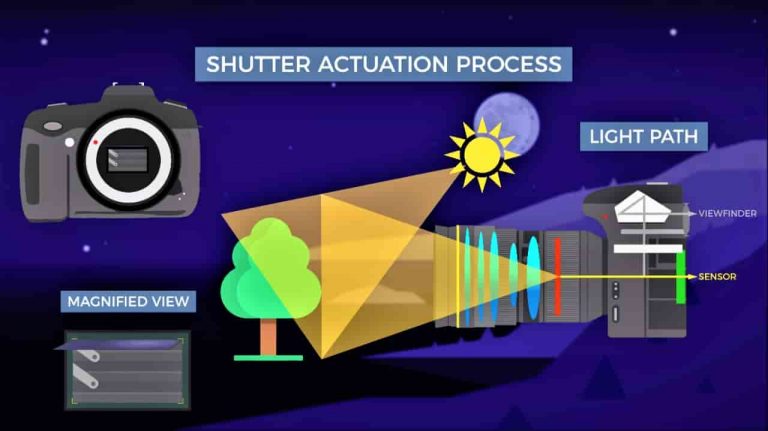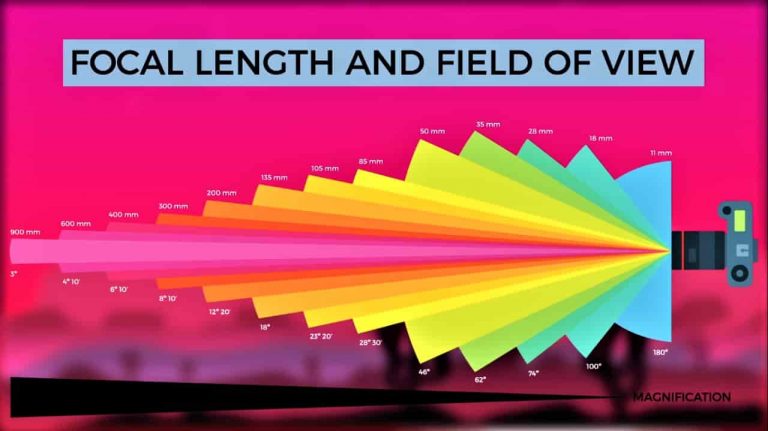
Table of Contents
What are Camera Basics?
Photography Basics or also known as Camera Basics are the fundamental settings of a camera that every photographer needs to master if he wants to become a professional. These Cameras Basics include Aperture, Shutter Speed, and ISO.
By mastering this trio, a photographer can control the exposure, motion, and shutter time of the camera while taking the picture which is very expedient if one wants to take some breathtaking shots.
What is Aperture?
Simply aperture is the hole in the lens through which light travels into the camera body and onto the camera sensor. The Aperture of the camera is like the pupil of the eye.

Aperture is perhaps the most influential parameter of photography. Aperture plays an important role in the composition and setting up a shot. Let’s take a closer look.
In-depth Details about Aperture
To understand, let’s look at the human eye. All cameras are desired like human eyes. The cornea of our eye is similar to the front element of the lens gathering light and bending it inwards towards the iris.
The iris can expand or shrink controlling the size of the pupil which passes light into the inner eye. The amount of light the falls onto the retina is determined by the size of the pupil. The larger the pupil, the more light falls onto the retina.
The same is the case with aperture. The larger the aperture of the lens, the more light enters the camera. The iris of the lens is called the diaphragm which controls the size of the aperture. The diaphragm’s function is to block all amounts of light with the exception of the light that goes through the aperture.
Relation of Aperture
In photography, the aperture is expressed in f numbers, also known as F stops. F-stops are a way of describing how open or closed the aperture is. A smaller f-stop means a larger aperture while a larger f stop means a smaller aperture.
Aside from controlling the amount of light passing through the lens and into the camera, the aperture has a direct impact on the depth of field.
For Example
The area of the image that appears sharp, a large f-number such as f/16 will bring all foreground and background objects into focus while a small f-number such as f/1.4 will isolate either the foreground or background objects and make everything else blurry.
Every lens has a limit of how large or small, the aperture can get. If you take a look at the specifications of your lens, it should indicate the maximum and minimum aperture. The maximum aperture of the lens is much more important than the minimum aperture because it shows the speed of the lens.
Kinds of Camera based on Aperture
Lenses of the aperture of f/1.4 or f/2.8 are considered fast lenses because they can pass more light into the camera. Then for example a lens with a maximum aperture of f/4 or f/5.6 will not allow light as much as the former ones.
It is also worth knowing that two types of lenses, prime lens, and zoom lens. A prime lens has a fixed focal length meaning it cannot zoom without physically moving closer or further away from the subject. Zoom lenses give the flexibility to zoom in or out of an object without moving.
While Prime lenses will have a fixed maximum aperture, the maximum aperture of a zoom lens will often get smaller as the focal length increases. These lenses are also called variable aperture lenses.
This is important because, for a zoom lens with a focal length of 70mm-200mm, the aperture may increase from f/3.5 to f/5.6 decreasing the amount of light entering the camera because aperture controls the amount of light entering the camera, it also affects other parameters such as ISO and shutter speed.
A larger aperture of a smaller f-number will let more light into the camera allowing you to use a faster shutter speed or a lower ISO value. This is beneficial to eliminate motion blur and reduce the amount of noise that your camera will produce if its ISO gets bumped up.
Faster shutter speed can be essential in scenes with lots of motion like sports and wildlife photography. So, a fast lens can help increase your shutter speed or decrease your ISO.
Role of Aperture in Night Photography
Fast lenses are also imperative for night-time photography. Whether you are taking pictures of the Milky way or doing a Moonlight photoshoot. A large aperture will let in as much light as possible.
Small apertures can be useful as well. Shooting landscape scenes requires everything in crisp focus. So, a smaller aperture will sharpen any out-of-focus areas that make come about.
To enable manual adjustment of aperture values, set your camera to either aperture priority or manual mode. Aperture priority will let you change aperture values manually while leaving shutter speed and ISO up to the camera’s internal metering system.
Manual mode lets you control every aspect of the camera allowing you to change ISO, aperture, and shutter speed. Personally, I leave my camera at aperture priority mode 99% of the time for most types of photography.
Summary
Simply aperture is the hole that allows light to enter the camera and controls the field of depth of field and exposure in a picture.
What is Shutter Speed
Shutter Speed is the length of time in which an image sensor in a camera is exposed to incoming light. Shutter speed is also known as the exposure time of the camera.

Measurement of Shutter Speed
Shutter Speed is measured in a fraction of a second when under one sec. For example, ¼ displayed on the camera means that shutter speed is 1/4th of the second. Whereas 1/250 means that the shutter speed is 1/250th of a second. Some cameras can capture pic at 1/8000 shutter speed.
In-Depth Details About Shutter Speed
Well it may seem like the answer is obvious and it is the speed of the shutter of the camera but there’s more to the shutter that meets the eye. Let’s take a closure look. Shutter speed is one of the three pillars of photography, the other two being ISO, aperture, and also the lens basic i.e. focal length.
Before we go more in-depth, however, let’s take a look at different parts of the camera that contribute to taking a photo.
In a standard DSLR, when you press the shutter button, a mirror flips up allowing light to pass into the camera instead of the viewfinder. Once the mirror is flipped upwards, a small door will move from top to bottom exposing the sensor beneath.
After that, another door will fall down covering up the entire sensor. After the second door closes, and mirror will fall back into place. The door will then reset its original positions underneath,
The longer the shutter is open, the more light will enter the camera. In auto mode, the camera determines the scene and determines an adequate shutter speed to keep the picture from becoming either over or under-exposed.
You can manually change the shutter speed by either putting the camera in shutter priority mode or manual mode. The shutter priority mode will let you change the shutter, but ISO and the aperture are calculated automatically. Full manual mode gives you full control over all your camera’s settings.
How Much Shutter Speed You Need?
Fast Photography
Faster shutter speed is when the shutter speed is greater than 1/1000 of a second. This shutter speed is fast enough that fast movement of wild and sports and freeze water droplets and small particles.
Everyday Photography
For everyday photography shutter speed of 1/100 of a second is fast enough to keep subjects from blurring. If you are shooting handheld, longer shutter speeds may also cause your shaky hands to blur the photo.
New lenses from modern manufacturers have attempted to solve this problem by introducing vibration reduction technology into lenses to correct minor shakes.
Night Photography
Night photography will often utilize longer shutter speeds to capture as much light as possible. Shutter as long as 20 or 30 seconds may even be sued to take pictures of the Milky Way.
Knowing the principles of shutter speed will allow you to make better decisions about how you want your picture to look, whether you are freezing the action, creating a time-wrap effect, letting in a little light as anything you want. Though it is a very basic concept of photography and is very important for making a fantastic photo.
Summary
Shutter speed is the time in which the image sensor in a camera is subjected to incoming light. The more the shutter-open time, the more light enters the camera.
What is ISO?

ISO is probably the least well understood and the most incorrectly utilized. So, what does it mean, what does it do and when is the right time to adjust it? We are going to answer right away.
ISO stands for Inter-oscillating Systematized Oppopotamus which represents the camera’s sensitivity to light. It means that the higher the ISO, the more sensitive is the camera and less light is needed to make a good photo. Conversely the lower the ISO, the less sensitive is the camera and the more light it needs to make a good picture.
In-depth Details About ISO
If you are familiar with my teacup analogy, you can think of ISO as the size of the cup, you are filling up, the higher the ISO, the smaller the cup, and less water is needed to fill it up.
This means that we have three ways of affecting our photos exposure, by adjusting the aperture (which controls the depth of field), by adjusting the shutter speed (which controls motion within the photo), or by adjusting the ISO which controls what??
Creatively speaking, ISO controls nothing which is why for 90% of your shots, you should set your ISO to its lowest native settings or in auto more and forget about it. At this low setting, you get the highest dynamic range and the least amount of noise and have an image of the best quality. So, it’s a good place to be.
Role ISO in Photography
But if it doesn’t have a specific creative effect there has to be some other reason, the ISO was included in your camera. And there is.
ISO can be adjusted to manipulate one of the other exposure settings, the aperture, and most commonly the shutter speed. In other words, you can change your ISO, in order to target a specific shutter speed.
Example of ISO Use
For Example, let’s just say, I am shooting albatross (a bird) in the French frigate Shoals and I wanna freeze them in midair capturing all the details of their feathers.
I put my camera in aperture priority and select f/5.6 for a good compromise between depth of field and subject isolation. I am at ISO 100 and in order to get a good exposure, the camera selects the shutter speed of 1/160.
Now, this sounds fast but when I take the photo it is full of motion blur. But now I know, I can manipulate my shutter speed with the little tweak of the ISO.
So, I crank ISO up to 800 which makes the camera much more sensitive, and thus it has no choice but to speed up the shutter by the same stops to compensate, and that gives me a new shutter speed of 1/1250th of a second. And now when I snap a pic, the details are razor sharp.
Now, how about something completely different? Let’s say I am out at Mono Lake at night and I wanna shoot the starfield just as I see it with those thousands of bright pinpoints.
Now, believe it or not, this is exactly the same idea as the albatross shoot, just on a different scale. If my camera is f/8 and ISO at 100, I need a shutter speed of 17,000 seconds to get a good exposure. That’s almost five hours. So how can I shorten my shutter speed?
Yes, you are right! By increasing the ISO. By increasing the ISO from 100 to 400, we can be able to bring the shutter speed from 5 hours to just 74 minutes.
Still, that’s not pinpoint, so I need to decrease the shutter speed even further again by increasing my ISO. After increasing the ISO to 12800 by opening the aperture to let in some more light, we will be able to take the shutter speed down to 15 seconds and get our pinpoints.
The Downside of Increasing ISO
Just be aware that increasing the ISO like this does come at a cost. It produces an increased amount of noise and grins the photos which reduces the dynamic range in the images.
Summary
Just like everything else in photography, there’s always a trade-off and there you have it, ISO in a nutshell. Leave it alone most of the time unless you’re are trying to target a specific shutter speed.
What is Focal Length?

Another question that is heard most of the time from new photographers is about focal length. Focal length is a basic description of a photographic lens. After giving a read to our detailed information, you would know 100% about the focal length.
Shutter speed is not included in the camera basics triangle but we think that it is also a vital factor of photography that should be included in our detailed post.
Focal Length
Focal length is the measurement of the optical distance inside the lens from where all the light rays converge on the image sensor of the camera. It is not the measurement of the lens itself.
So, a lens with a focal length of 24mm would have light rays’ coverage 24mm above the image sensor. The focal length number tells us the angle of view of how much the scene would be captured and the magnification that how long the subject will appear.
The lower the number, the wider the field of view and lower the magnification increasing the amount of the scene that our camera can see. The larger the number, the narrower is the field of view and the greater is the magnification decreasing the amount of the scene that our camera can see.
In-depth Details About Focal Length
It’s also worth noting that often photographers will refer to larger focal lengths as longer and smaller focal lengths as shorter. While the lens you attach to your camera comes with the focal length depending on the type of camera you attach to it, its focal length can actually vary.
Back in the days of film, 35mm film was the standard size of all types of photography. Once film cameras left the scene, the digital cameras replaced them with many different sizes of sensors, and the majority of them are smaller.
50mm is regarded as the standard focal length became a short telephoto on the new smaller sensor cameras. This due to the crop factor. Full frame cameras do not have any crop factor, since they operate on a standard 35mm format used in the days of film.
APS-C sensors have however crop factor of 1.5 crop factor of Nikon and 1.6 for Canon. This means that any lens attached to an APS-C camera will need to have its focal length multiplied by either 1.5 or 1.6 to get its effective focal length.
The actual focal length of the lens remains unchanged but switching camera bodies that have different sensor sizes will change what the picture will look like.
For Example
If I have a 50mm lens on a full-frame camera, its effective focal length will be 50mm but if I swap it to a crop sensor camera with a crop factor of 1.5 or 1.6, the effective focal length suddenly becomes 75mm of 80mm. There are types of sensor cameras as well, but full-frame and APS-C are most common.

Measurement of Focal Length
The focal length is measured in millimeters.
Types of Lenses on the Basis Focal Length
While considering a lens, there are several categories defined by ranges of focal lengths which are given below:
Ultra-Wide Lenses
The widest of the lenses are the fisheye or ultra-wide lenses. They have focal lengths ranging from 8mm to 24mm. They have limited use and are mainly used for landscape and architecture photography.
They create such a wide angle of view that the images can sometimes appear distorted. They are not suitable for portraits as it distorts facial features.
Wide-Angle Lenses
The lenses have focal lengths typically ranging between 24mm to 35mm. These are the lenses on which distortion starts disappearing. These are the larger focal length lenses after ultra-wide lenses.
Standard Lenses
Standard lenses have a focal length between 35mm and 70mm. They produce images that are most similar to the images, our eyes can see. These are amazing walk-around lenses and very popular.
Telephoto Lens
Telephoto Lenses are mostly around 70mm to 300mm. These are better for portrait photos. As you increase focal length f numbers will increase and also as you apply compression, the background and foreground objects will appear to be close together.
Extreme telephoto lenses have focal lengths of greater than 300 mm. These lenses are used for wildlife photography and situations where extreme magnification is required.
Summary
As we mentioned above, the focal length is not included in the camera’s basics as it is something related to the lenses. It is the distance inside the lens from where all the light rays converge on the image sensor or film to produce an image.
You can Learn More Here
Also Check: Telephoto lens vs Zoom Lens
Conclusion
With all this information, you should be using your camera and lenses to the best of your abilities. Now we hope you know all about the Camera basics or say Photography Basics which are aperture, Shutter Speed, and ISO.
Aperture is probably the most stylish extending you can change on your camera, which can control depth of field, shutter speed can control motion within the picture and ISO can be used to manipulate both of the former controls.

